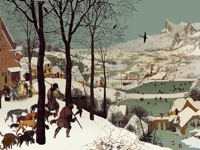Difference between revisions of "Folly"
m (Text replacement - "http://nordan.daynal.org" to "https://nordan.daynal.org") |
m (Text replacement - "http://" to "https://") |
||
| Line 3: | Line 3: | ||
==Etymology== | ==Etymology== | ||
[https://nordan.daynal.org/wiki/index.php?title=English#ca._1100-1500_.09THE_MIDDLE_ENGLISH_PERIOD Middle English] folie, from Anglo-French, from fol fool | [https://nordan.daynal.org/wiki/index.php?title=English#ca._1100-1500_.09THE_MIDDLE_ENGLISH_PERIOD Middle English] folie, from Anglo-French, from fol fool | ||
| − | *Date: [ | + | *Date: [https://www.wikipedia.org/wiki/13th_Century 13th century] |
==Definitions== | ==Definitions== | ||
*1 : lack of [[good]] sense or [[normal]] prudence and [[foresight]] | *1 : lack of [[good]] sense or [[normal]] prudence and [[foresight]] | ||
| Line 12: | Line 12: | ||
*5 : an often extravagant picturesque building erected to suit a fanciful taste | *5 : an often extravagant picturesque building erected to suit a fanciful taste | ||
==Description== | ==Description== | ||
| − | In [[architecture]], a '''folly''' is a [ | + | In [[architecture]], a '''folly''' is a [https://en.wikipedia.org/wiki/Building building] actually constructed primarily for decoration, but either suggesting by its [[appearance]] some other [[purpose]], or merely so extravagant that it [[transcends]] the [[normal]] range of garden ornaments or other class of building to which it belongs. In the [[original]] use of the [[word]], these buildings had no other use, but from the 19-20th centuries the term was also applied to highly decorative buildings which had secondary [[practical]] [[functions]] such as housing, sheltering or [[business]] use. In the 18th century [https://en.wikipedia.org/wiki/English_gardens English gardens] and French landscape gardening often featured [[Roman]] [[temples]], which [[symbolized]] [[classical]] [[virtues]] or [[ideals]]. Other 18th century garden follies represented Chinese temples, Egyptian pyramids, ruined abbeys, or Tatar tents, to [[represent]] [[different]] continents or historical eras. Sometimes they [[represented]] rustic villages, mills and cottages, to [[symbolize]] rural [[virtues]]. |
==Characteristics== | ==Characteristics== | ||
The [[concept]] of the folly is somewhat [[ambiguous]], but they generally have the following properties: | The [[concept]] of the folly is somewhat [[ambiguous]], but they generally have the following properties: | ||
| Line 20: | Line 20: | ||
* They are [[purpose]]-built. Follies are deliberately built as ornaments. | * They are [[purpose]]-built. Follies are deliberately built as ornaments. | ||
* They are often [[eccentric]] in [[design]] or construction. This is not strictly [[necessary]]; however, it is common for these [[structures]] to call [[attention]] to themselves through unusual details or [[form]]. | * They are often [[eccentric]] in [[design]] or construction. This is not strictly [[necessary]]; however, it is common for these [[structures]] to call [[attention]] to themselves through unusual details or [[form]]. | ||
| − | * There is often an element of fakery in their construction. The [[canonical]] example of this is the sham ruin: a folly which pretends to be the remains of an old building but which was in fact constructed in that state.[ | + | * There is often an element of fakery in their construction. The [[canonical]] example of this is the sham ruin: a folly which pretends to be the remains of an old building but which was in fact constructed in that state.[https://en.wikipedia.org/wiki/Folly] |
[[Category: Architecture]] | [[Category: Architecture]] | ||
[[Category: General Reference]] | [[Category: General Reference]] | ||
Latest revision as of 00:23, 13 December 2020
Etymology
Middle English folie, from Anglo-French, from fol fool
- Date: 13th century
Definitions
- 1 : lack of good sense or normal prudence and foresight
- 2 a : criminally or tragically foolish actions or conduct
- 3 : a foolish act or idea
- 4 : an excessively costly or unprofitable undertaking
- 5 : an often extravagant picturesque building erected to suit a fanciful taste
Description
In architecture, a folly is a building actually constructed primarily for decoration, but either suggesting by its appearance some other purpose, or merely so extravagant that it transcends the normal range of garden ornaments or other class of building to which it belongs. In the original use of the word, these buildings had no other use, but from the 19-20th centuries the term was also applied to highly decorative buildings which had secondary practical functions such as housing, sheltering or business use. In the 18th century English gardens and French landscape gardening often featured Roman temples, which symbolized classical virtues or ideals. Other 18th century garden follies represented Chinese temples, Egyptian pyramids, ruined abbeys, or Tatar tents, to represent different continents or historical eras. Sometimes they represented rustic villages, mills and cottages, to symbolize rural virtues.
Characteristics
The concept of the folly is somewhat ambiguous, but they generally have the following properties:
- They are buildings, or parts of buildings. Thus they are distinguished from other garden ornaments such as sculpture.
- They have no purpose other than as an ornament. Often they have some of the appearance of a building constructed for a particular purpose, but this appearance is a sham.
- They are purpose-built. Follies are deliberately built as ornaments.
- They are often eccentric in design or construction. This is not strictly necessary; however, it is common for these structures to call attention to themselves through unusual details or form.
- There is often an element of fakery in their construction. The canonical example of this is the sham ruin: a folly which pretends to be the remains of an old building but which was in fact constructed in that state.[1]
